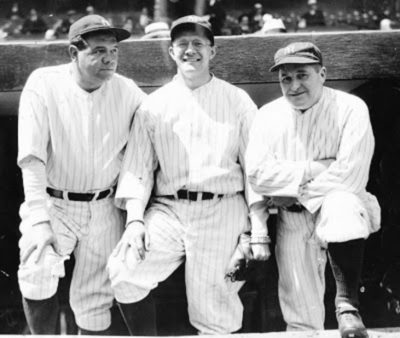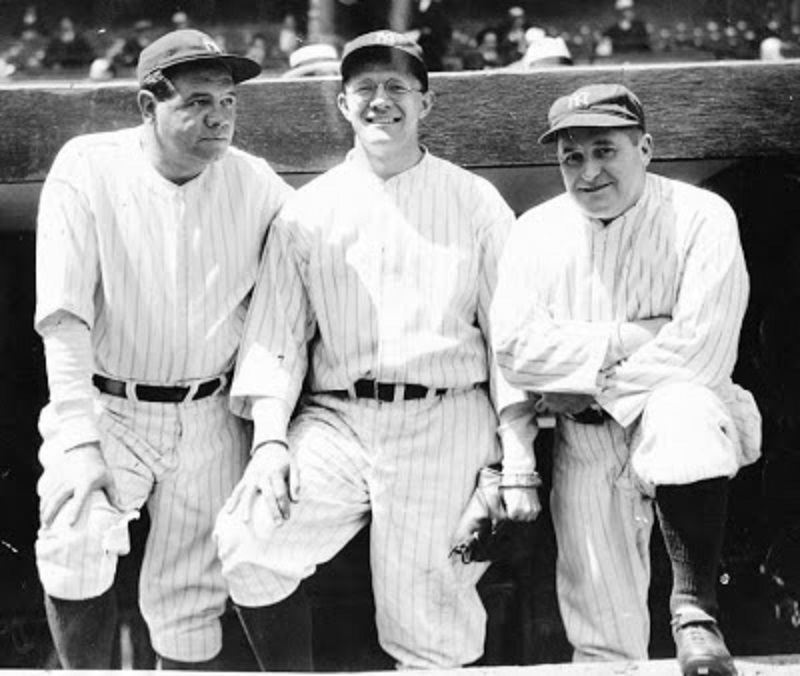Scroll Down to Read Today’s Essay
Subscribe to Baseball History Comes Alive for automatic updates. As a Free Bonus, you’ll get instant access to my Special Report: Gary’s Handy World Series Reference Guide!
Joe McCarthy Photo Gallery
Click on any image below to see photos in full size and to start Photo Gallery:

The Joe McCarthy Era Begins in New York!
“…The square-jawed little Irishman from Buffalo, New York won more World Series championships than John McGraw and Connie Mack.” –Sportswriter Arthur Daley, speaking of Joe McCarthy
Ninety-two years ago this month, on April 13, 1931, Joe McCarthy made his debut as Yankee manager, beating the Red Sox at Yankee stadium, 6-3. That was the beginning of one of the most successful runs in baseball history. In 16 seasons at the Yankee helm, all he did is go 1460-867 (.627) with eight pennants and seven World Series championships. And all this came after a pennant with the Cubs in 1929, their first in eleven years.
In the featured photo, we see Babe Ruth and Joe McCarthy. But who’s the player in the middle? Want to take a guess? The answer is at the bottom of the post.*
McCarthy’s success over 24 seasons ranks him as one of the greatest managers in baseball history. He’s number one in many significant categories, including holding the highest winning percentage during both the regular season (2125-1333, .615) and post-season (26-13, .667), and was the first manager to win pennants in both the National and American Leagues. In a total of 32 years managing in the major and minor league level, his 1922 Louisville club was the only team to finish either with a losing record or below fourth place.
McCarthy cited “health reasons” for his resignation as Yankee manager three months into the 1946 season, but there were also persistent rumors that he resigned due to a personality conflict with the volatile new Yankee president, Larry MacPhail. After two years out of baseball, McCarthy was hired by the Red Sox for the 1948 season after they had finished 14 games behind the Yankees in 1947.
McCarthy continued his winning ways in Boston, compiling a remarkable 229-145 (.606) record. Although he failed to win a pennant in Boston with two heart-breaking second-place finishes, he came awfully close. In 1948, his Red Sox finished in a tie for first with the Indians, but he lost a one-game playoff to the Tribe; and in 1949, he lost the pennant in the final weekend of the season to the Yankees. Ted Williams felt the two emotionally draining second-place finishes took the heart out of McCarthy, adding, “He finally quit during the ’50 season, I think, out of his own extreme disappointment.”
Some detractors believed Joe McCarty’s success was simply due to being fortunate enough to have talented teams. He was once described by White Sox manager Jimmy Dykes as a “push-button” manager. Yet McCarthy was an outstanding teacher and developer of talent, and was particularly adept at handling temperamental players such as Hack Wilson, who thrived under McCarthy’s direction, and Babe Ruth. After McCarthy left the Cubs, Hack Wilson’s career decline began almost immediately under the tactless and abrasive Rogers Hornsby, and he was never again the same player.
Joe McCarthy, unquestionably one of the greatest managers in baseball history, died of pneumonia at the age of 90 on October 13, 1979. He was elected to the Hall of Fame by the Veterans Committee in 1957.
*The player in the middle is pitcher Johnny Broaca, who joined the Yankees on June 6, 1933 out of college after being suspended by Yale varsity coach, “Smoky Joe” Wood.
Gary Livacari
Subscribe to our website, “Baseball History Comes Alive!” with over 1200 fully categorized baseball essays and photo galleries, now closing in on the one million hits mark with 968K hits and over 800 subscribers: https://wp.me/P7a04E-2he
Information: Excerpts edited from the Joe McCarthy Wikipedia page

